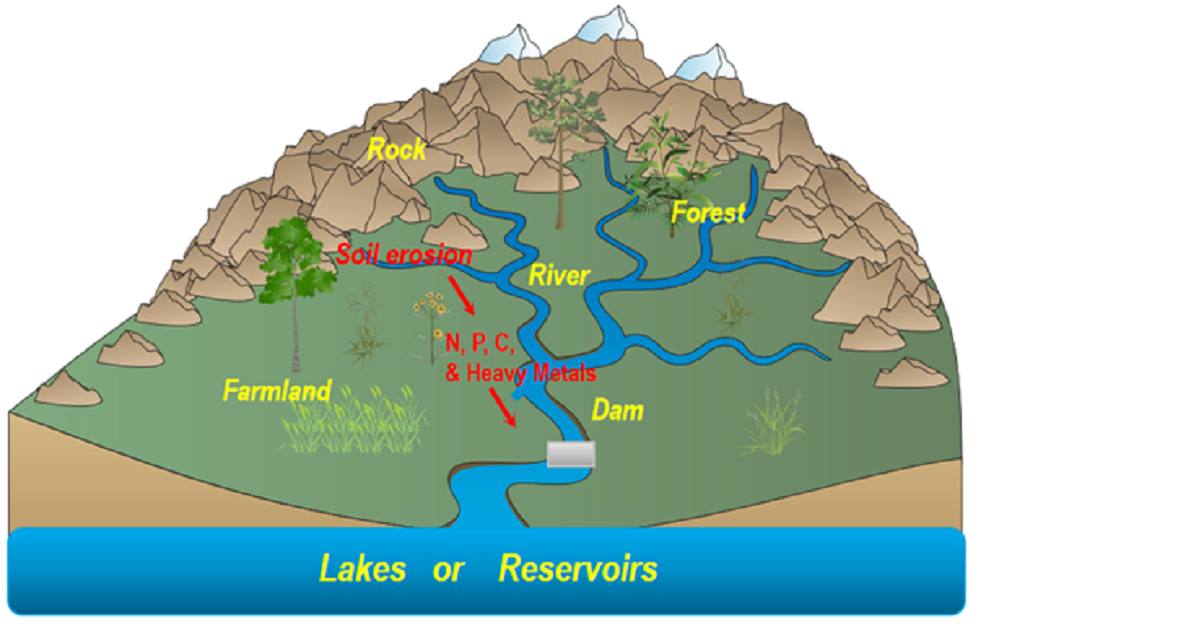Soil Erosion and Contaminant Management in Watersheds
A special issue of Water (ISSN 2073-4441). This special issue belongs to the section "Soil and Water".
Deadline for manuscript submissions: closed (25 April 2025) | Viewed by 2294

Special Issue Editors
Interests: water pollution; hydrochemistry; chemical weathering; heavy metal; Isotope geochemistry
Special Issues, Collections and Topics in MDPI journals
Interests: environmental remediation; heavy metal; phytoremediation; bioavailability; microbe
Special Issues, Collections and Topics in MDPI journals
Interests: nitrogen; phosphorus; organic matter; sediment; lake; reservoir
Special Issues, Collections and Topics in MDPI journals
Interests: soil erosion; non-point pollution; sediment; soil and water conservation
Special Issues, Collections and Topics in MDPI journals
Special Issue Information
Dear Colleagues,
Soil erosion and non-point source pollution pose significant threats to surface water quality in many areas with concentrated rainfall, exacerbating global land degradation and threatening food security and the supply of high-quality water. Soil erosion and contaminant management are the hot issues of watershed protection and governance, especially the study of biogeochemical processes and the dynamics of nitrogen, phosphorus, organic matter, and heavy metals. This Special Issue focuses on the study of soil erosion and contaminant management dynamics, including case studies and methodological studies, including new methods related to and advances in nutrient morphology and processes, water–soil/sediment–nutrients–heavy metals transport interaction mechanisms, and model and process simulations. The purpose of this Special Issue is to provide a communication platform for scholars engaged in the study of the geochemical dynamics of water–soil/sediment–nutrients–pollutants in varied watersheds.
Prof. Dr. Jun Xiao
Dr. Zhiqiang Zhu
Prof. Dr. Jingfu Wang
Prof. Dr. Peng Shi
Guest Editors
Manuscript Submission Information
Manuscripts should be submitted online at www.mdpi.com by registering and logging in to this website. Once you are registered, click here to go to the submission form. Manuscripts can be submitted until the deadline. All submissions that pass pre-check are peer-reviewed. Accepted papers will be published continuously in the journal (as soon as accepted) and will be listed together on the special issue website. Research articles, review articles as well as short communications are invited. For planned papers, a title and short abstract (about 100 words) can be sent to the Editorial Office for announcement on this website.
Submitted manuscripts should not have been published previously, nor be under consideration for publication elsewhere (except conference proceedings papers). All manuscripts are thoroughly refereed through a single-blind peer-review process. A guide for authors and other relevant information for submission of manuscripts is available on the Instructions for Authors page. Water is an international peer-reviewed open access semimonthly journal published by MDPI.
Please visit the Instructions for Authors page before submitting a manuscript. The Article Processing Charge (APC) for publication in this open access journal is 2600 CHF (Swiss Francs). Submitted papers should be well formatted and use good English. Authors may use MDPI's English editing service prior to publication or during author revisions.
Keywords
- soil erosion
- nutrient
- heavy metal
- pollutants
- watersheds
Benefits of Publishing in a Special Issue
- Ease of navigation: Grouping papers by topic helps scholars navigate broad scope journals more efficiently.
- Greater discoverability: Special Issues support the reach and impact of scientific research. Articles in Special Issues are more discoverable and cited more frequently.
- Expansion of research network: Special Issues facilitate connections among authors, fostering scientific collaborations.
- External promotion: Articles in Special Issues are often promoted through the journal's social media, increasing their visibility.
- Reprint: MDPI Books provides the opportunity to republish successful Special Issues in book format, both online and in print.
Further information on MDPI's Special Issue policies can be found here.








